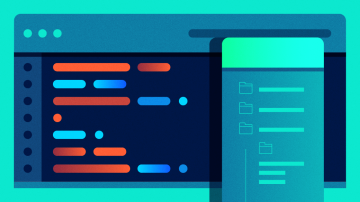Ansible is a radically simple IT automation platform that makes your applications and systems easier to deploy. It allows you to avoid writing scripts or custom code to deploy and update your applications, systems, and various classifications of network-attached devices. Ansible allows you to automate in a language that approaches plain English with no agents to install on remote systems and uses native protocols based on device type—such as SSH for Unix-style operating systems, WinRM for Windows systems, REST APIs (httpapi) for REST API appliances, and many more.
Background
At AnsibleFest 2019, my colleague Sumit Jaiswal and I gave a talk, titled "Ansible development deep dive: How to write a security integration module and collection for Ansible," about something that we have been working on. This article recaps the finer points of our talk; I hope it will highlight the potential of what Ansible is—and can be capable of—in the realm of information security automation.
A lot of this started with my colleague Massimo Ferrari's statement that "Ansible automation can be the lingua franca to integrate and orchestrate the many security platforms spread across different domains." We spent a lot of time mulling this over; it may be obvious to DevOps and automation professionals who've discovered the power of Ansible, but infosec doesn't have similar tools that target the industry's problems in the same way. Therefore, Ferrari's statement offers a lot of potential for the infosec industry.
In this article, I'll summarize two major points we highlighted in our AnsbileFest 2019 talk:
- Ansible recommended development practices
- Classify what you're integrating with and how you connect to it (API or CLI?)
Ansible recommended development practices
The Ansible engineering team likes to never write the words "best practice," because we can't possibly know what's best for you in your specific situation. You are the expert on topics as they apply to your unique environment and requirements. However, we can provide recommendations, which I'll outline from the perspective of an Ansible module developer.
Modules
Modules are user-focused and self-contained. This mostly means that the code contained in your module should be self-contained within your module or in a module_util. The latter is what allows us to share code between modules, but everything must be as self-contained as possible, as we don't want to introduce too many external dependencies. We also want each module to perform some sort of state management. Each module should be idempotent, which basically means "inflict change if needed, otherwise, do not." A module should not attempt to contain a workflow (that's what playbooks are for), and we want to leave that up to the user. Modules shouldn't attempt to "do too much," such that you have one massive module that takes 100 arguments and, based on values provided by the user, performs wildly different actions on the target device.
An example of what we generally want to avoid could go something like this:
- name: Create a virtual machine
some_module:
thing_to_do: "create_virtual_machine"
name: "bobs_awesome_vm"
storage_size: 100G
ram: 24G
vcpus: 4
- name: Create a virtual storage volume
some_module:
thing_to_do: "create_virtual_storage_vol"
name: "bobs_awesome_storage"
storage_size: 1000G
lun_id: 12In this example, the fictitious some_module is performing completely disjointed actions based on the value of thing_to_do. This is not a discrete, self-contained unit of work from the perspective of an Ansible module. These should be two separate modules that could even share code on the backend through a custom module_util (if that makes the developer's life easier). Either way, they should be separate modules so the user can easily define, read, and understand the task as written. As a developer, you want to make the module's interaction user-focused.
Another aspect of being user-focused is that the user should not need any knowledge of the destination API in order to use the module effectively. The module should provide useful defaults, documentation, and examples that allow users to pick their own automation path.
Collections
Ansible collections are a relatively new concept, but they are generally seen as the future for Ansible content of all shapes and sizes. They allow Ansible content, such as modules, module_utils, plugins of all kinds, roles, docs, tests, playbooks, and whatever the community dreams up next, to exist as a cohesive unit to be tested, verified, and distributed as an entity. What's more (and this is its real advantage for developers) is that it decouples the content from the Ansible Core runtime. This allows Ansible content to be lifecycle-managed separately from Ansible itself, meaning it can be released as often or as infrequently as the content author or maintainer desires. No longer will new features have to wait six months for the next Ansible release. The collection authors can release as often as they desire.
Collections are meant to be a simple progression into a brave new world where the Ansible Core execution engine is symbolically similar to CPython. Ansible collections are symbolically similar to Python modules found on PyPI. Ansible Galaxy is symbolically similar to PyPI as the de facto distribution mechanism.
From a developer standpoint, you simply need to drop your files in the correct location and update any custom module_utils Python import paths. From a user perspective, you just need to add the collection namespace and name to the play or block that intends to use that content.
Classify what you're integrating with and how you connect to it
In the security realm, appliance devices or software that is meant to be used like an appliance (network devices, embedded systems, and so on) sometimes present the administrator both an application programming interface (API) and a command-line interface (CLI). As a module developer, you must make some decisions in service of ease of development, maintainability of code, and, ultimately, consistent user experience.
CLI
If you are potentially going to wrap a CLI, ask yourself whether that CLI offers a consistent interface with output you can reasonably and consistently parse. Beyond that, does the CLI offer the ability to formulate idempotent transactions? While the majority of CLIs offer get and set types of transactions (especially on Unix/Linux systems), some of them do not, and this is something module authors need to consider.
When considering CLI implementations with network or embedded devices that have a standard CLI but don't offer a traditional Unix shell, you should look into implementing a cliconf plugin. This type of plugin enables your users to interact with appliances or embedded devices in a way that's natural to the seasoned Ansible user and beginner alike. Alternatively, should you find yourself with a device that allows you to execute local Python code (local to the device or system itself; a "managed host" in Ansible terminology), then consider the run_command module_util. The latter situation is effectively just a traditional module development workflow, as it would be for a traditional GNU/Linux distribution.
API
If the technology you are attempting to integrate with offers an API, determine whether that API is a local on-system API (local to the remote "managed host" system) or a remote API such as a REST API?
In the event you find yourself with a local Python API and it's advantageous to use it instead of the REST API (in the event both are available), this situation is effectively the same as a traditional module development workflow in a GNU/Linux distribution.
However, if the only option is a REST API, or if the available REST API is determined to be the best option, then writing an httpapi connection plugin is best for general ease of implementation, maintenance, and handling things like AuthN, AuthZ, sessions, and so on. It also offers an idiomatic pattern for talking to these types of devices, even though they have a considerably different means of communication than most others that Ansible works with.
An example to illustrate this point is probably common to anyone who has automated a web service with a module that doesn't provide an httpapi connection plugin. Typically in these scenarios, the play, block, or task must be run against localhost, and the various information for the connection to the web service must be passed to each invocation of the module for each task.
---
- name: talk to foo device
hosts: localhost
tasks:
- name: do something
foo_device_do_thing:
url: foo.example.com
username: "{{ foo_device_username }}"
passwd: "{{ foo_device_password }}"
validate_certs: true
thing_state: present
some_param: barIf this module had been implemented against an httpapi connection plugin instead, then the various connection-specific parameters would be host variables or group variables and wouldn't have to be carried around at the task level in playbooks.
Here's an inventory entry to handle the AuthN/AuthZ connection for all Ansible modules, written against the httpapi connection plugin. It also performs session handling for increased performance:
[foo_devices]
foo.example.com
[foo_devices:vars]
ansible_network_os=foo_device
ansible_user=foo_device_username
ansible_httpapi_pass=foo_device_password
ansible_httpapi_validate_certs=trueThis playbook would be considerably more idiomatic. The foo_devices are a first-class device type and host pattern for the playbook.
---
- name: talk to foo device
hosts: foo_devices
tasks:
- name: do something
foo_device_do_thing:
thing_state: present
some_param: barA playbook has to define information for every task, so imagine one that has 20 or 100 tasks. The overhead would be considerable. This doesn't feel much like directly automating the hosts defined in the host field. However, the httpapi connection plugin negates the need to define the connection information over and over, and it also talks natively to devices over a REST API, just as you would on a Linux system over SSH in a playbook.
Something to note about httpapi connection plugins is that, even though the user defines hosts, groups, host vars, and group vars, just in like a traditional Unix/Linux or Windows-managed host, these modules actually execute against the localhost (the "control host" in Ansible nomenclature). This is something to keep in mind when you're developing.
What the what?
If you're new to Ansible module development, this might seem like a lot to take in at once. To be fair, it is. However, as you become more seasoned in the finer points of Ansible module development for a wide array of device types and technology solution classifications, the motivation for different development strategies starts to make sense. Some device classifications have idiosyncrasies, and this model helps Ansible developers and users deal with those in a consistent and predictable way.
Wrapping up
If you have questions about Ansible module development models, feel free to reach out through the vibrant Ansible Community, and more specifically, the Ansible Security Automation Working Group.









1 Comment